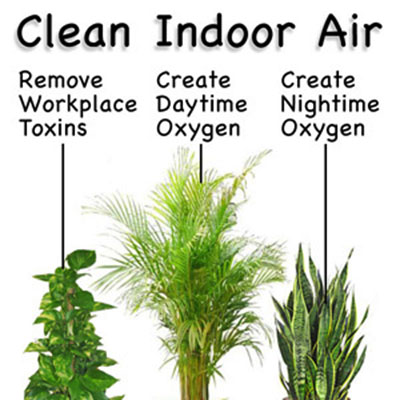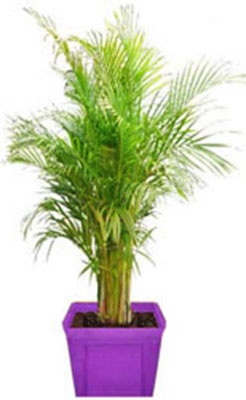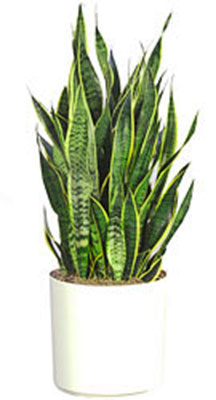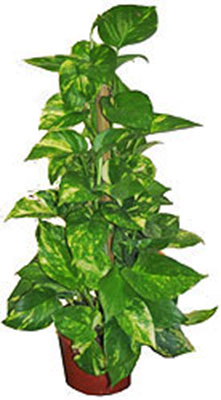|
from TED Website
Kamal Meattle's office park in New Delhi is a model of green business. Meattle himself is a longtime activist for cleaning up India's air.
Transcript
My doctors told me that my lung capacity had gone down to 70 percent, and it was killing me. With the help of IIT, TERI, and learning from NASA, we discovered that there are three basic green plants, common green plants, with which we can grow all the fresh air we need indoors to keep us healthy.
We've also found that you can reduce the
fresh air requirements into the building, while maintaining industry
indoor air-quality standards. The botanical names are in front of you.
With these three plants, you can grow all the fresh air you need.
In fact, you could be in a bottle with a cap on top, and you would not die at all, and you would not need any fresh air. We have tried these plants at our own building in Delhi, which is a 50,000-square-feet, 20-year-old building. And it has close to 1,200 such plants for 300 occupants.
Our studies have found that there is a 42 percent probability of one's blood oxygen going up by one percent if one stays indoors in this building for 10 hours. The government of India has discovered or published a study to show that this is the healthiest building in New Delhi.
And the study showed that, compared to other buildings, there is a reduced incidence of eye irritation by 52 percent, respiratory systems by 34 percent, headaches by 24 percent, lung impairment by 12 percent and asthma by nine percent.
And this study has been published on
September 8, 2008, and it's available on the government of India
website.
It is also important for the environment, because the world's energy requirements are expected to grow by 30 percent in the next decade. 40 percent of the world's energy is taken up by buildings currently, and 60 percent of the world's population will be living in buildings in cities with a population of over one million in the next 15 years.
And there is a growing preference for living and working in air-conditioned places.
Growing Fresh Air...With Common House Plants2009 from Heartspring Website
Bill Wolverton MD, author of How To Grow Fresh Air, explains how plants and their companion microorganisms are used to create a closed ecological life support system for long duration space habitation.
His research included wastewater recycling as well as the purification and revitalization of indoor air.
Indoor air pollution can be higher inside the home than outside, especially in during winter months. For larger buildings this approach works to reduce energy requirements for air circulation and provides a cost savings, helping to comply with indoor industrial air quality standards.
Here are the three plants doctor Wolverton identified best suited to improving air quality and the number of plants required to provide a healthier indoor breathing environment:
Day Time Oxygen Production
The Areca Palm breathes in carbon dioxide and breathes out oxygen during the day.
In excessively dirty air conditions, such as in city of Mumbai India, plant leaves are wiped clean once daily with a moist soft cloth. In cities with cleaner air, this is done once weekly. The Areca Palm prefers to have its soil slightly dry between watering and thrives in full sun.
Moving the Areca Palm outdoors every three to four months will help rejuvenate healthy plant growth.
Night Time Oxygen for Sleeping
The snake plant releases oxygen during the night, helping to condition indoor air while humans and pets sleep. The snake plant prefers intermittent dry conditions and full sun, but it can survive in low light conditions.
Absorbing Toxic Aerosols In The Work Area
The Pothos plant absorbs toxic vapors, working to remove volatile organic chemicals (VOC's) including paint fumes, solvents, and petroleum fuels. Many toxic vapors are in homes come from fumes coming from sources such as flame retardants in furniture and common household cleaners.
According to the Environmental Protection Agency, about 700 "secret chemicals" are added to products every year in the United States. See Washington Post article about secret chemicals
The Pothos plant is a moisture loving plant and handles low light conditions well.
With these three plants, it's possible to grow enough the fresh air to stay alive inside a closed environment for a long period of time.
Office Building Air Quality Research
These three plants where tested for 15 years at Paharpur Business Centre and Software Technology Incubator Park in New Delhi, India.
The 50,000 square foot building is 20 years old and contains over 1,200 plants for 300 working occupants.
The Paharpur office building is rated the healthiest building in Delhi by the Government of India. This study was published in September, 2008 by the Government of India, Central Pollution Control Board and the Chittaranjan National Cancer Institute, Kolkata, India.
The study found that there is a 42% probability of increasing blood oxygen by 1% if one is inside the building for 10 hours.
Compared to other non-planted buildings in Delhi, the Paharpur Office Building showed reductions in:
Because of the fresh air produced by the buildings’ plants, there was a 15% reduction in energy costs. This is significant reduction in cost considering that 40% of the world’s energy is used to maintain building environments.
The most surprising discovery in this study was a measured 20% increase in human productivity and marked decrease of employee sick days.
|




